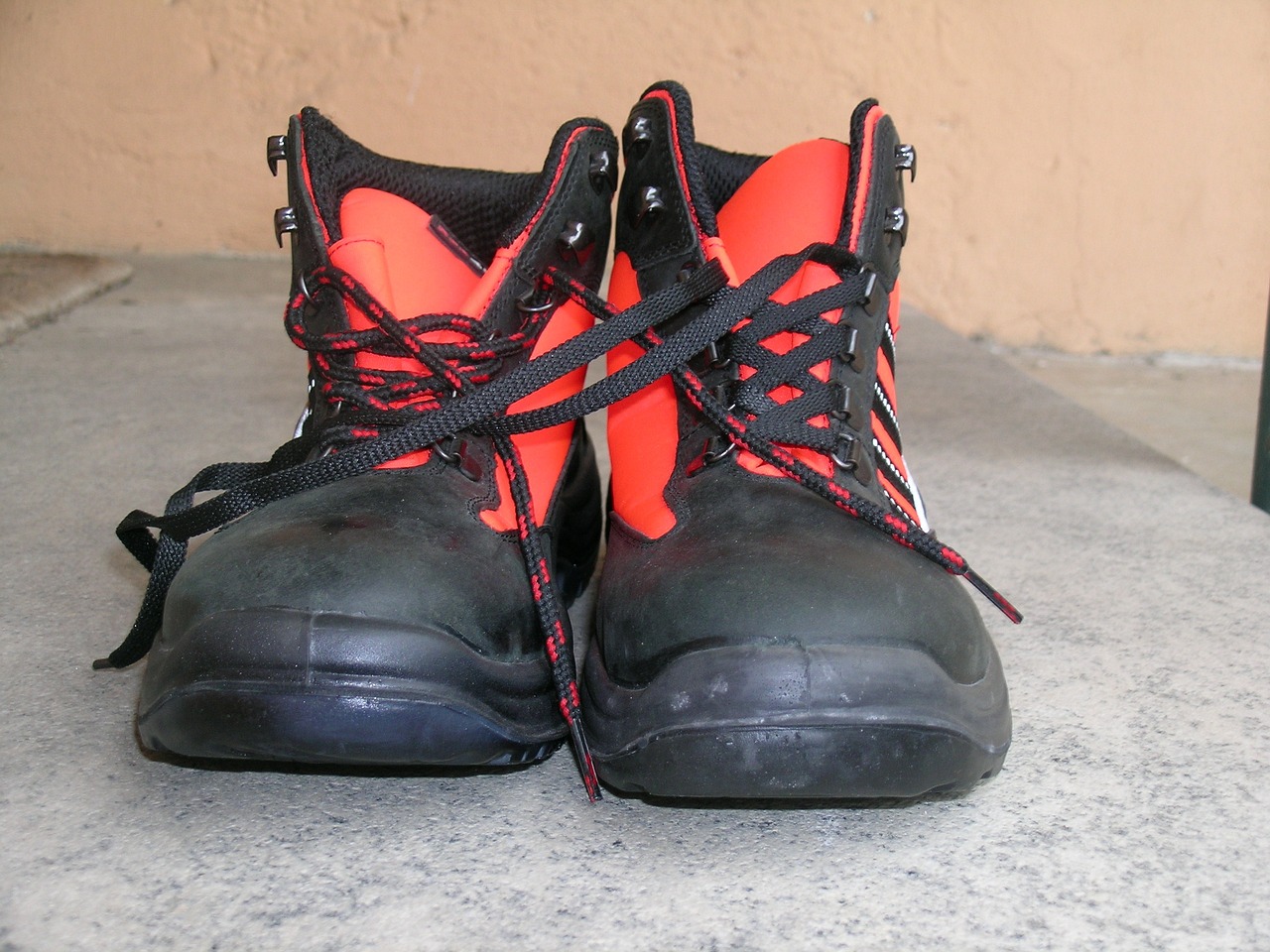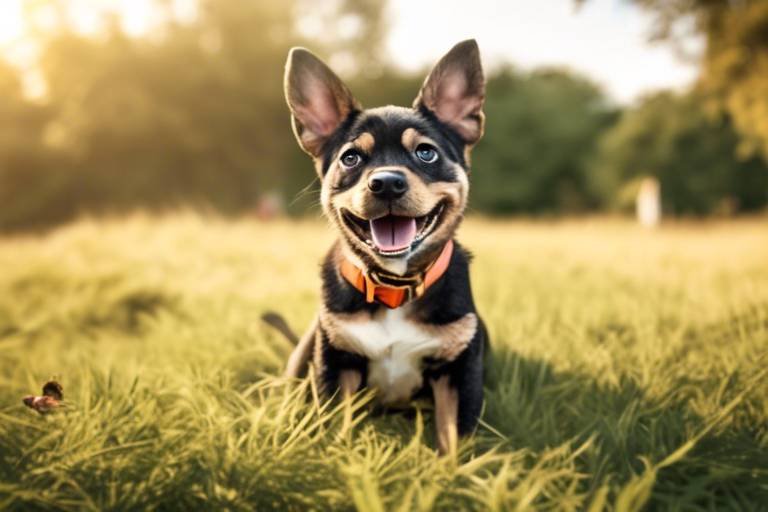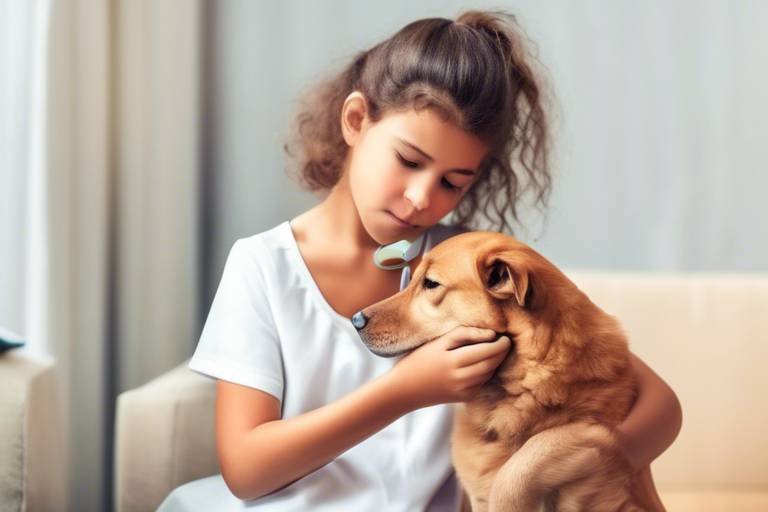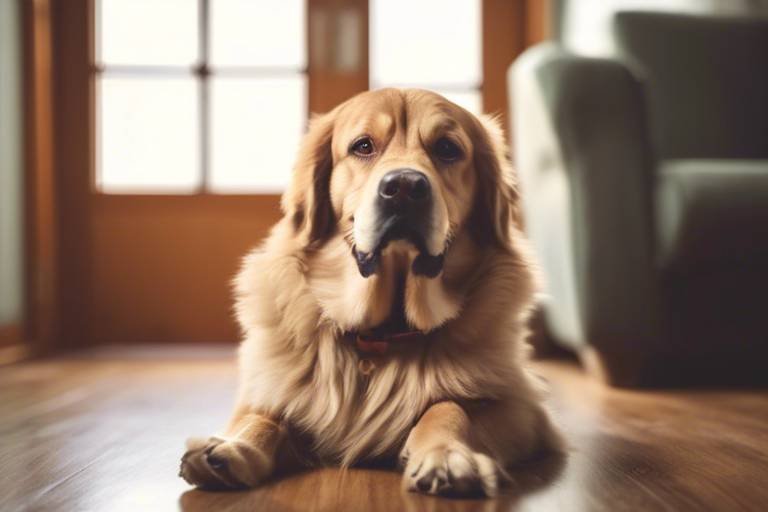What to Do If Your Pet Swallows Something Toxic
As a pet owner, there's nothing more distressing than the thought of your furry friend getting into something harmful. Whether it's a curious cat nibbling on a houseplant or a dog that has sniffed out a leftover snack, toxic ingestion can happen in the blink of an eye. In these situations, knowing how to respond can mean the difference between life and death for your beloved pet. This article provides essential guidance on recognizing the signs of toxic ingestion, taking immediate action, and preventing future incidents, ensuring your pet's safety and health in critical situations.
Understanding the signs of toxic ingestion is crucial for timely intervention. When your pet consumes something harmful, their body may react in various ways. Common symptoms to watch for include:
- Vomiting - This is often the first sign that something is wrong. If your pet is vomiting repeatedly, it’s time to take action.
- Diarrhea - Loose stools can indicate that your pet's digestive system is struggling to cope with the toxin.
- Excessive drooling - If you notice your pet drooling more than usual, it could be a sign of distress.
- Loss of appetite - A sudden disinterest in food can be a red flag.
- Behavioral changes - If your pet seems lethargic, disoriented, or unusually agitated, it's essential to investigate further.
Keep a close eye on your pet, and remember that some symptoms may take time to appear. If you suspect they’ve ingested something toxic, don’t wait for symptoms to worsen.
Knowing the right steps to take immediately can save your pet's life. The first thing you should do is stay calm. Panicking won't help your pet, and it can cloud your judgment. Here’s what you should do:
Reaching out to your veterinarian is vital. When you suspect your pet has ingested something toxic, call your vet right away. They are trained to handle these situations and can provide guidance based on the specific toxin involved. Be ready to explain the situation clearly and concisely.
When contacting a veterinarian, specific details are needed to help them assess the situation quickly. Be prepared to provide:
- The type of substance your pet may have ingested.
- The amount consumed, if known.
- Your pet's age, weight, and breed.
- Any symptoms your pet is exhibiting.
This information will help your vet determine the best course of action for your pet’s treatment.
Not all situations require a vet visit. If your pet is showing severe symptoms like seizures, difficulty breathing, or unconsciousness, you should seek emergency services immediately. Prepare for your visit by gathering your pet’s medical history and any packaging from the toxic substance if available. This will aid the veterinary staff in providing the best care possible.
In some cases, first aid can be administered at home. However, it's essential to consult your veterinarian before attempting any home remedies. Some safe techniques to stabilize your pet until professional help is available include:
- Keep your pet calm and comfortable.
- Do not induce vomiting unless specifically instructed by your vet.
- Offer water to prevent dehydration, but don’t force it.
Remember, your vet is your best resource, so don’t hesitate to call them for advice.
Preventive measures are essential for keeping your pet safe. Here are some strategies to minimize the risk of toxic ingestion in the future:
Creating a safe environment is key. Start by removing or securely storing items that could be harmful, such as:
- Cleaning supplies
- Medications
- Certain houseplants that are toxic to pets
- Food items that are harmful, like chocolate or grapes
Think of your home as a fortress for your pet—every potential danger should be locked away!
Everyone in the household should be aware of pet safety. It’s essential to educate family members on how to prevent and respond to toxic ingestion. Hold discussions about:
- What items are dangerous for pets
- How to recognize symptoms of toxicity
- Emergency contact information for the vet
By working together, you can create a safer environment for your furry friends!
Q: What should I do if I see my pet eating something toxic?
A: Remain calm, take note of what they ate, and contact your veterinarian immediately for guidance.
Q: Are all household items dangerous to pets?
A: Not all, but many common items like certain plants, foods, and cleaning products can be toxic. Always research before bringing new items into your home.
Q: How can I tell if my pet is having a severe reaction?
A: Look for symptoms like difficulty breathing, seizures, or extreme lethargy. If you notice any of these, seek emergency help right away.

Recognizing Symptoms of Toxic Ingestion
As a pet owner, it's crucial to be vigilant and aware of the potential dangers lurking in your home. Pets, especially curious ones, often explore their surroundings with their mouths, which can lead to accidental ingestion of toxic substances. Recognizing the signs of toxic ingestion can be the difference between life and death for your furry friend. So, what should you look out for? Here are some common symptoms that may indicate your pet has swallowed something harmful:
One of the first signs to notice is a sudden change in behavior. If your usually playful pup seems lethargic or your cat is hiding more than usual, it might be time to investigate further. Additionally, keep an eye out for physical symptoms such as vomiting, diarrhea, or excessive drooling. These can be alarming, but they are often the body's way of trying to expel the harmful substance. If your pet is experiencing difficulty breathing or shows signs of distress, such as whining or pacing, don't hesitate to take action.
Other symptoms can include:
- Loss of appetite: If your pet suddenly refuses to eat, it could be a sign of nausea or discomfort.
- Changes in urination: Increased or decreased urination can indicate a serious issue.
- Seizures or tremors: Neurological symptoms can be particularly concerning and require immediate veterinary attention.
It's essential to remember that symptoms can vary significantly between different animals and types of toxins. For instance, some pets might experience gastrointestinal upset, while others may show neurological signs. If you have any doubts about your pet's health, it's always better to err on the side of caution and consult with your veterinarian. Being proactive can save your pet's life!
In conclusion, recognizing the symptoms of toxic ingestion is a vital skill for any pet owner. By being aware of the signs and knowing how to respond, you can ensure the safety and well-being of your beloved companion. Always keep emergency numbers handy and consider having a list of common household toxins accessible, just in case. After all, our pets rely on us to keep them safe, and being informed is the first step in that responsibility.

Immediate Actions to Take
When you suspect that your beloved pet has ingested something toxic, panic can quickly set in. However, it’s crucial to remain calm and take immediate action because every second counts in these situations. First and foremost, do not induce vomiting unless specifically instructed by a veterinarian. Inducing vomiting can sometimes do more harm than good, depending on the substance consumed. Instead, start by assessing your pet’s condition. Is your furry friend acting unusually? Are they drooling excessively, or do they seem lethargic? Recognizing these signs can help you determine how urgent the situation is.
Once you’ve assessed your pet’s condition, the next step is to contact your veterinarian or an emergency animal clinic. Be prepared to provide as much information as possible, including:
- The type of substance your pet ingested.
- The estimated amount consumed.
- Your pet’s weight and age.
- Any symptoms you have observed.
This information will help the veterinarian give you the best possible advice on how to proceed. If you have access to the packaging or label of the toxic substance, have it ready to share with the vet, as it may contain vital information about the toxin.
When you reach out to your veterinarian, be concise yet thorough. Explain the situation clearly and calmly. The vet may ask you a series of questions to gauge the severity of the situation and recommend immediate steps to take. If you can’t reach your regular vet, don’t hesitate to call an emergency animal hospital. Remember, time is of the essence, and getting professional advice quickly can make a significant difference in your pet’s outcome.
As mentioned earlier, providing detailed information is crucial. Here’s a quick reference table to help you remember what to share:
| Information Needed | Details to Provide |
|---|---|
| Type of Substance | Exact name and nature of the toxic item. |
| Amount Ingested | Estimate how much your pet consumed. |
| Time of Ingestion | When did you notice the ingestion? |
| Symptoms Observed | List any symptoms you’ve noticed. |
Not all cases of toxic ingestion require immediate emergency services, but knowing when to act is vital. If your pet is exhibiting severe symptoms such as seizures, difficulty breathing, or unresponsiveness, you should seek emergency care right away. In less severe cases, your vet may advise you to monitor your pet at home or bring them in for a check-up. Always err on the side of caution; if you’re unsure, it’s better to consult a professional.
In the meantime, while you’re waiting for help or advice, keep your pet calm and comfortable. Avoid giving them food or water unless directed by a veterinarian, as this could complicate the situation further. Your pet will pick up on your anxiety, so try to stay as relaxed as possible.
Being prepared and knowing the immediate actions to take can make a world of difference when faced with a potential emergency. Remember, your quick response can mean the difference between life and death for your furry friend.
Contacting Your Veterinarian
When you suspect your pet has swallowed something toxic, the clock starts ticking. Time is of the essence, and reaching out to your veterinarian promptly can make all the difference. Your vet is your best ally in this situation, equipped with the knowledge and resources to guide you through the necessary steps. But how do you convey the urgency of the situation effectively? Here are some tips to ensure you communicate clearly and efficiently.
First, stay calm. It’s easy to panic when you think your beloved furry friend is in danger, but a clear head will help you relay the situation accurately. Begin by gathering as much information as you can about what your pet ingested. This includes:
- The name of the substance
- The amount consumed
- The time of ingestion
- Your pet's breed, age, and weight
- Any symptoms your pet is exhibiting
Once you have this information, pick up the phone and call your veterinarian. If you have a 24-hour emergency vet service, don’t hesitate to reach out to them as well. When you speak to the vet, explain the situation clearly and provide the details you gathered. This will help them assess the urgency of the situation and advise you on the next steps. For example, they may instruct you to induce vomiting or bring your pet in for immediate care.
In some cases, the vet might ask you to monitor your pet's symptoms over a short period. This is especially true if your pet is showing mild symptoms. However, if your pet's condition appears critical, such as difficulty breathing or seizures, do not wait; head to the nearest emergency vet clinic immediately. Remember, your vet is there to help you navigate this challenging time, so don't hesitate to ask questions or clarify any instructions they give.
Additionally, it’s wise to keep the contact information of your veterinarian and the nearest emergency animal hospital handy. You never know when you might need it, and having it readily available can save precious time in an emergency.
Providing Essential Information
When you find yourself in the stressful situation of your pet potentially having ingested something toxic, the first thing you need to do is gather essential information to share with your veterinarian. This can greatly influence the speed and effectiveness of the treatment your pet receives. Think of it as preparing for a critical mission; every detail counts!
Start by noting the type of substance your pet has ingested. This includes whether it was a household item, a plant, or human food. For instance, certain foods like chocolate, grapes, and onions are notorious for being harmful to pets. If possible, have the packaging or the plant identification ready, as this can help your vet quickly assess the situation. Additionally, try to determine how much of the substance your pet consumed. This information is vital, as the dosage can dictate the level of risk involved.
Next, observe your pet closely. Take note of any symptoms they might be exhibiting, such as vomiting, diarrhea, lethargy, or seizures. These signs can provide critical clues about the severity of the situation. If you have more than one pet, make sure to identify which one is affected. In some cases, pets can share toxic substances, so knowing the specifics can help your vet tailor their advice.
Here’s a quick checklist of essential information to prepare before contacting your veterinarian:
- Type of substance: What exactly did your pet swallow?
- Amount ingested: How much do you estimate they consumed?
- Time of ingestion: When did this happen?
- Symptoms observed: Are there any signs of distress?
- Pet's health history: Any pre-existing conditions or medications?
Finally, don’t forget to mention your pet's breed and weight, as these factors can influence their reaction to toxins. This information will help the veterinarian determine the appropriate course of action swiftly. Remember, the more detailed and organized your information is, the better equipped your vet will be to assist your furry friend. In moments of panic, having this checklist handy can be a lifesaver!
Understanding Emergency Services
When it comes to your furry friend’s health, knowing when to seek emergency services can be a game changer. Not all instances of toxic ingestion require a frantic dash to the vet, but some situations definitely do. Imagine your pet just gobbled down a handful of your chocolate stash—what do you do? First, take a deep breath; then, assess the situation. If your pet is showing severe symptoms such as vomiting, seizures, or difficulty breathing, it's time to act fast and get them to an emergency vet clinic.
Emergency services can vary based on the severity of the situation. For instance, if your pet appears lethargic after eating something questionable, it might be wise to call your vet for advice. However, if they’re displaying signs of distress, such as excessive drooling or collapsing, you should head straight to the nearest emergency animal hospital. Here are some key points to consider:
- Know your local emergency vet clinics: Familiarize yourself with nearby emergency veterinary services before a crisis strikes. This includes knowing their hours and contact details.
- Prepare for the visit: If you suspect your pet has ingested something toxic, gather any remaining packaging or labels of the substance. This information will be invaluable to the veterinarian.
- Stay calm: Animals can sense anxiety. Keeping your cool can help your pet feel more secure during a stressful situation.
Additionally, it's important to understand that some emergencies can be handled at home. For example, if your vet advises you to induce vomiting, they might provide specific instructions over the phone. Always follow their guidance carefully. However, if you're unsure or if your pet is showing severe symptoms, don't hesitate to seek immediate help. Remember, the quicker you act, the better the chances of a positive outcome.
In summary, understanding when to seek emergency services can make all the difference in your pet's life. Being prepared and informed will not only help you react swiftly but also ensure your beloved companion receives the care they need in critical moments.
Q: What should I do if I suspect my pet has swallowed something toxic?
A: First, assess your pet’s condition. If they are showing severe symptoms, take them to an emergency vet immediately. If they seem fine, contact your veterinarian for advice.
Q: Can I induce vomiting at home?
A: Only induce vomiting if your veterinarian advises it. Improper induction can cause more harm than good.
Q: How can I find an emergency vet?
A: Search online for emergency veterinary clinics in your area or ask your regular vet for recommendations. Keep their contact information handy.
Home Remedies and First Aid
When your furry friend accidentally ingests something toxic, your mind races with worry. In those frantic moments, knowing some home remedies and first aid techniques can make a significant difference. While these methods are not substitutes for professional veterinary care, they can help stabilize your pet until you get them to the vet. First things first, always stay calm. Animals can sense your anxiety, and your composure can help soothe them.
One of the most crucial steps is to determine what your pet has ingested. If it’s a known toxin, you might want to induce vomiting, but this isn’t always safe for every type of toxin. For example, if your pet has swallowed a sharp object or a caustic substance, inducing vomiting can cause more harm than good. Always consult a veterinarian first. If you’re unsure, it’s better to err on the side of caution and seek professional advice.
In cases where vomiting is appropriate, you can use hydrogen peroxide. The general guideline is to give 1 teaspoon for every 10 pounds of your pet's body weight, but never exceed 3 tablespoons. Administer it directly into the mouth using a syringe. After giving the peroxide, keep an eye on your pet. If they don’t vomit within 15 minutes, do not repeat the dose. Instead, contact your vet immediately.
Another home remedy involves activated charcoal. This substance can help absorb toxins in your pet's system. However, it should only be given under the guidance of a vet. If your vet recommends it, the typical dose is about 1 to 3 grams per kilogram of your pet’s weight. Mix it with water to create a slurry and administer it to your pet. Remember, this should only be done if your vet says it's safe.
In addition to these remedies, keep your pet hydrated. If your pet is conscious and alert, encourage them to drink water. Dehydration can be a serious issue, especially if they are vomiting or have diarrhea. You can also offer them an electrolyte solution designed for pets, which can help replenish lost fluids and minerals.
It’s essential to monitor your pet closely for any changes in behavior or symptoms. If they exhibit signs of distress, such as excessive drooling, lethargy, or difficulty breathing, seek immediate veterinary care. Remember, while home remedies can provide temporary relief, they are not a replacement for professional treatment.
Lastly, keep a list of common household toxins handy. This list can include items like chocolate, grapes, onions, and certain plants that are harmful to pets. Familiarizing yourself with these can help you act quickly in case of an emergency. Here’s a quick reference table for some common toxins:
| Toxin | Symptoms | Action |
|---|---|---|
| Chocolate | Vomiting, diarrhea, rapid breathing | Induce vomiting; contact vet |
| Grapes/Raisins | Vomiting, lethargy, kidney failure | Contact vet immediately |
| Onions/Garlic | Weakness, lethargy, red urine | Contact vet |
| Houseplants (e.g., lilies) | Vomiting, drooling, lethargy | Contact vet |
In summary, while it’s vital to know some basic home remedies and first aid techniques, they should always be coupled with professional veterinary advice. The health and safety of your pet should always come first, and being proactive can save precious time in a critical situation.
Q: What should I do if my pet eats something toxic?
A: Stay calm, identify the substance, and contact your veterinarian immediately for guidance. If advised, you may induce vomiting or administer activated charcoal.
Q: Are there any home remedies I can use?
A: Yes, hydrogen peroxide can be used to induce vomiting in some cases, and activated charcoal can help absorb toxins, but always consult your vet first.
Q: How can I prevent my pet from ingesting toxic substances?
A: Pet-proof your home by keeping harmful substances out of reach, educating family members, and being aware of common household toxins.
Q: When should I seek emergency veterinary care?
A: If your pet shows severe symptoms like difficulty breathing, seizures, or loss of consciousness, seek emergency care immediately.

Preventing Future Incidents
When it comes to our furry friends, prevention is always better than cure. Just like we lock our doors at night to keep our homes safe, we need to pet-proof our living spaces to keep our pets from ingesting toxic substances. Imagine your home as a treasure chest filled with wonders—some of those treasures, however, can be dangerous for your pets. So, how do we keep that treasure chest safe? Here are some practical strategies that can help minimize the risk of toxic ingestion.
First and foremost, it’s crucial to be aware of what items in your home might pose a risk. Common household products, such as cleaning supplies, certain plants, and even human food, can be harmful or fatal to pets. For instance, did you know that chocolate is toxic to dogs? It’s like giving them a sweet poison! To combat this, consider creating a hazard inventory of items that could be dangerous. You could even make a simple table to keep track of these items:
| Item | Type of Toxicity | Symptoms |
|---|---|---|
| Chocolate | Food Poisoning | Vomiting, diarrhea, increased heart rate |
| Antifreeze | Chemical Poisoning | Seizures, lethargy, kidney failure |
| Houseplants (e.g., Lilies) | Plant Toxicity | Vomiting, drooling, lethargy |
Next, let’s talk about pet-proofing your home. This involves not just hiding dangerous items but also making your living space less accessible to your pets. Here are some effective ways to do this:
- Secure cabinets: Use child-proof locks on cabinets that store cleaning supplies, medications, or other hazardous materials.
- Designate pet-free zones: Create areas in your home where pets are not allowed, especially kitchens and storage rooms.
- Store food safely: Ensure that all human food, especially those that are toxic to pets, is stored out of their reach.
Another key aspect of prevention is education. It’s not enough for just you to know what’s harmful; everyone in your household must be on the same page. Sit down with your family and discuss which items are dangerous for pets and what to do in case of an emergency. Think of it as a family safety meeting—everyone should know the rules! You can even create a fun, colorful poster and hang it in a common area to remind everyone of these important safety tips.
Finally, regular veterinary check-ups can help ensure your pet’s health and safety. During these visits, you can discuss any concerns regarding toxins and get advice on how to keep your pet safe from potential hazards. Just like we go for routine check-ups to catch health issues early, our pets deserve the same attention.
In conclusion, preventing toxic ingestion in pets is all about creating a safe environment, educating your family, and staying vigilant. By taking these proactive steps, you can significantly reduce the chances of your beloved pet encountering something harmful. Remember, a little effort goes a long way in keeping our furry friends safe and sound!
Q: What should I do if I suspect my pet has ingested something toxic?
A: If you suspect your pet has ingested something toxic, contact your veterinarian immediately. They can provide you with the best advice based on the situation.
Q: Are there any common household items that are toxic to pets?
A: Yes, common household items like chocolate, certain plants, antifreeze, and some cleaning supplies can be toxic to pets. Always keep these items out of reach.
Q: How can I make my home safer for my pets?
A: You can make your home safer by securing hazardous materials, creating pet-free zones, and educating your family about pet safety.
Pet-Proofing Your Home
Pet-proofing your home is like building a fortress for your furry friend. Just as you wouldn't leave your valuables unguarded, you should ensure that your home is a safe haven for your pets. Think of it as creating a safe playground where your pet can explore without the risk of encountering hidden dangers. The first step is to identify potential hazards that could lead to toxic ingestion. Common household items, such as cleaning supplies, medications, and certain plants, can be incredibly harmful if ingested. Have you ever thought about what might be lying around that could pose a threat to your pet's health?
To start, consider the areas your pet frequents the most. Are there loose cords, small objects, or chemicals that could be easily accessed? For instance, keep cleaning products locked away in cabinets, and ensure that any medications are stored out of reach. You might even want to use child-proof locks on cabinets if your pet is particularly curious. Additionally, be cautious with food items that are safe for humans but toxic to pets, such as chocolate, grapes, and onions. A simple rule of thumb is to treat your pet like a toddler; if it’s unsafe for a child, it’s probably unsafe for your pet too.
Another critical area to focus on is your garden or outdoor space. Many common plants, such as lilies, azaleas, and sago palms, can be poisonous to pets. If you love gardening, consider researching pet-safe plants or creating a designated pet-friendly area. You can also install fencing or gates to keep your pet from wandering into potentially dangerous areas. Remember, prevention is always better than cure!
Here are some additional tips to help you pet-proof your home:
- Secure Trash Bins: Make sure to use bins with lids to prevent your pet from rummaging through and eating something harmful.
- Hide Cords: Tuck away electrical cords and cables to prevent chewing, which can lead to serious injuries.
- Check for Small Objects: Regularly scan your floors for small items that could be swallowed, such as coins, buttons, or toys.
- Monitor Your Pet: Always supervise your pet when they are in new environments, especially around unfamiliar items.
By taking these proactive steps, you can significantly reduce the risk of toxic ingestion and create a safe environment for your beloved pet. Remember, it’s all about being one step ahead and ensuring that your home is a sanctuary where your pet can thrive without fear of danger. After all, a happy pet means a happy owner!
Q: What are the most common household items that are toxic to pets?
A: Some common toxic items include chocolate, grapes, onions, certain cleaning products, and medications. Always check labels and keep these items securely stored.
Q: How can I tell if my pet has ingested something toxic?
A: Symptoms may include vomiting, diarrhea, lethargy, seizures, or unusual behavior. If you notice any of these signs, contact your veterinarian immediately.
Q: Are there any plants I should avoid in my home or garden?
A: Yes, plants like lilies, azaleas, and sago palms are known to be toxic to pets. Opt for pet-safe plants to ensure your furry friend's safety.
Q: What should I do if my pet swallows something toxic?
A: Stay calm and contact your veterinarian or an emergency pet poison hotline. They will guide you on the next steps to take based on the situation.
Educating Family Members
When it comes to keeping our beloved pets safe, education is key! It’s not just about knowing what to do in an emergency; it's also about understanding how to prevent those emergencies from happening in the first place. Imagine your home as a fortress, where everyone knows their role in protecting the castle's most cherished inhabitants. This is why about pet safety is essential.
Start by having open discussions about the potential hazards that pets face in everyday life. For instance, common household items like cleaning supplies, certain plants, and even some human foods can be toxic to pets. By sharing this knowledge, you’re not only raising awareness but also fostering a sense of responsibility among family members. Encourage them to ask questions, share their thoughts, and voice any concerns they might have about your furry friend’s safety.
Consider creating a simple pet safety checklist that everyone can refer to. This could include:
- Identifying toxic plants and removing them from the home.
- Understanding which foods are safe and which are harmful.
- Keeping harmful substances, like medications and cleaning products, out of reach.
- Knowing the signs of toxic ingestion and what to do if it occurs.
Moreover, it’s important to involve children in this educational process. Kids can be particularly curious and may not fully understand the dangers that certain objects or substances pose. Use engaging methods, like storytelling or games, to teach them about pet safety. This can help them remember important information and take an active role in keeping their pets safe. For example, you could create a fun quiz about which items are safe or unsafe for pets, turning the learning experience into a playful activity.
Another effective strategy is to designate a pet safety ambassador within the family. This person can be responsible for reminding others about safety protocols, checking the house for potential hazards, and ensuring that everyone is on the same page. This not only reinforces the importance of pet safety but also creates a team effort within the household. After all, teamwork makes the dream work, right?
Lastly, don't forget to keep the lines of communication open. Regularly check in with family members about any new concerns or questions they might have regarding your pet's safety. This ongoing dialogue helps to reinforce the importance of education and keeps everyone alert to potential risks. Just like in a family, where each member plays a vital role, every person's awareness and vigilance can make a significant difference in ensuring your pet's safety and well-being.
Here are some common questions that family members may have about pet safety:
- What should I do if I suspect my pet has ingested something toxic? Contact your veterinarian immediately and provide them with as much information as possible.
- Are there any household items that are particularly dangerous for pets? Yes, some common items include chocolate, grapes, certain plants (like lilies), and household cleaners.
- How can I educate my children about pet safety? Use engaging methods like storytelling, games, and quizzes to teach them about safe and unsafe items for pets.
Frequently Asked Questions
- What should I do if I suspect my pet has swallowed something toxic?
If you suspect your pet has ingested something toxic, remain calm and assess the situation. Look for any signs of distress such as vomiting, lethargy, or unusual behavior. Immediately contact your veterinarian or an emergency animal clinic for guidance. Time is of the essence, so don't wait too long to seek professional help!
- How can I recognize symptoms of toxic ingestion in my pet?
Common symptoms of toxic ingestion can include vomiting, diarrhea, drooling, seizures, or difficulty breathing. If your pet is displaying any unusual behavior, such as excessive whining or hiding, it's important to take these signs seriously. Always err on the side of caution and consult with a veterinarian if you notice anything out of the ordinary.
- Can I treat my pet at home if they ingest something toxic?
While some minor issues can be addressed at home, it's crucial to consult with your veterinarian first before administering any home remedies. In certain cases, inducing vomiting or administering activated charcoal might be recommended, but these actions should only be taken under professional guidance to ensure your pet's safety.
- What information should I provide to my veterinarian?
When contacting your veterinarian, provide them with as much detail as possible. This includes your pet's breed, age, weight, and any symptoms they're exhibiting. Additionally, knowing what substance they ingested, how much, and when it happened can significantly aid in their diagnosis and treatment plan.
- When should I take my pet to an emergency vet?
If your pet is showing severe symptoms such as difficulty breathing, seizures, or loss of consciousness, you should seek emergency veterinary care immediately. Even if symptoms seem mild, it’s better to be safe than sorry, so don't hesitate to reach out for help.
- What steps can I take to prevent my pet from ingesting toxic substances?
Preventing toxic ingestion starts with pet-proofing your home. Keep hazardous items like cleaning supplies, medications, and certain plants out of reach. Educate everyone in your household about what is safe and what isn’t. Regularly check your environment for potential hazards and make adjustments as necessary.
- How can I educate my family about pet safety?
Hold family discussions about pet safety and the dangers of toxic substances. Use visual aids like charts or lists of common household items that are toxic to pets. Encourage everyone to participate in keeping the home safe, and consider involving kids in pet-proofing tasks to reinforce the importance of safety.



















